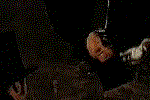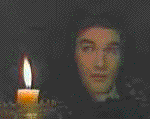Black Jade's Masquerade | home
Nightfall in New Orleans | Storylines | Black Jade | Rules | Approved Characters | Vampire the Masquerade | The Sabbat | The Clan Page | Werewolf the Apocalypse
Nightfall in New Orleans

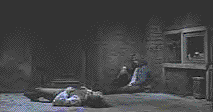
(A Vampire the Masquerade and Werewolf the Apocalypse Chronicle)
We are Children of the Night.

We walk your streets and leave you unaware, until you are caught within our dead stare.
We lurk in the alleys and the places where you meet. Your deepest terrors calls our feast.
The Beast ................ is within us all.
Welcome to the most haunted city in America. Rich in Voodoo and Native American traditions, this city has the most and strongest reports of paranormal activity, and is undoubtedly one of the places where the veil is the thinnest. Featured on The Scariest Places on Earth, it is the home of the cursed Magnolia Palace, and that is just the start.
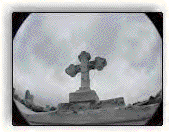
Bordering Plantation Country and Cajun Country, New Orleans stands as tall as her mother country, France. Creole, Cajun, African, Spanish, French and plain old Southern Hospitality make it one of the most visited and written about cities in America.
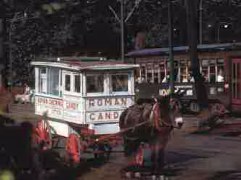
Anne Rice's New Orleans:
Love her or loathe her, Anne Rice is a one-woman cottage industry in New Orleans and one of the town's biggest boosters. Many tourists come here just because they have read her books; she writes seductive descriptions of her hometown that are actually pretty accurate--minus the vampires, witches, and ghosts, of course. Rice uses many real locales; the Gallier House, for example, was the inspiration for the home of vampires Lestat and Louis. Her own childhood homes and present dwelling turn up in Violin and The Witching Hour. Even her nonhorror novel Exit to Eden sent its protagonists on a romantic trip to New Orleans, exulting in the sensual tropical air and gorging on barbecued shrimp at Pascal Manale.
Anne Rice (née O'Brien) was born on October 4, 1941, in New Orleans to Irish parents. When she was 16, her family moved to Texas, where she met her husband, Stan Rice. They married in 1961 and moved to California a few years later, living for years in the San Francisco area. Interview with the Vampire was published in 1976, and in the 1980s, the Rice's and their son packed up and moved back to New Orleans.
Rice continues to put out about one novel a year, often set at least in part in the city she loves. She always does her first book signing at the Garden District Book Shop, 2727 Prytania St., and as her fortunes have grown, she has bought a number of significant buildings from her youth. This has earned praise from some, who see the salvation of decaying landmarks, and the ire of others, who see it as the consumption of pieces of local history for someone's private enjoyment.
Rice herself has recently been involved in a war of words with flamboyant restaurant owner Al Copeland, who bought a long-vacant car dealership and turned it into the "California Creole" restaurant Straya. Copeland's gaudy (to put it charitably) approach to decoration offended Rice, partly because of the restaurant's location on otherwise stately and dignified St. Charles Avenue and partly because that was where we caught a last glimpse of her most beloved vampire, Lestat. Rumor has it that Rice was also miffed because she wanted to buy the site for her own cafe. Regardless, the verbiage the combatants have exchanged (Rice has a habit of taking out wordy ads in the newspaper whenever she has a bone to pick) has amused the town. Rice also throws an increasingly elaborate Halloween ball each year; tickets are much sought after.
Between her personal life and her novels (and the overlap therein), there are any number of Anne Rice landmarks around town including tours of one of her buildings and, once a week, of her home itself. The faithful could make a day of it; vampire spotting is strictly up to you.
Outta Town
Even vampires have to get out to the country every once in a while.
Destrehan Manor, La. 48, Destrehan, Louisiana. This plantation, the oldest in the region that's open to the public, was used as a location in the filming of Interview.
Oak Alley Plantation, 3645 La. 18, Vacherie, Louisiana. This popular tourist spot was also used as a location for the film version of Interview. Some Rice readers think this was the model for Pointe du Lac in the book; others believe it was based on the Pitot House, 1440 Moss St.
In The French Quarter
The romance of the French Quarter seems to attract vampires, who found easy pickin's in its dark corners in the days before electricity.
St. Louis Cemetery No. 1, 400 Basin St. A tomb (empty, of course) with Louis the vampire's name is located here in the "Vampire Chronicle" books, and Louis occasionally goes to sit on it and brood. Rumor has it that Rice has purchased a tomb here for her eventual use. Note: Keep your wits about you here, not because of vampires but because this isn't the safest neighborhood.
Gallier House, 1132 Royal St. This famously preserved museum is said by Rice scholars to be the model for the house on Rue Royal that was home to vampires Lestat and Louis in Interview with the Vampire.
The stretch of 700 to 900 Royal St. Quite a few of the exteriors for the Interview movie were filmed along this stretch--though the set decorators had to labor long and hard to erase all traces of the 20th century. Try to imagine the streets covered in mud. Then try to imagine how folks who live around here felt about it.
Madame John's Legacy, 632 Dumaine St. In the Interview movie, this is the house from which the caskets are being carried as Brad Pitt's voice-over describes Lestat and the little vampire Claudia going out on the town: "An infant prodigy with a lust for killing that matched his own. Together, they finished off whole families."
Café du Monde, 800 Decatur St. Lestat visits this restaurant in The Tale of the Body Thief, and Michael and Rowan snack here in The Witching Hour.
Jackson Square. It's here that Claudia makes an important decision regarding Lestat's fate in Interview and that Raglan James meets Lestat in The Tale of the Body Thief.
Omni Royal Orleans hotel, 621 St. Louis St. Katherine and Julien Mayfair stay here--it's still the St. Louis Hotel--in The Witching Hour.
Court of Two Sisters, 613 Royal St. Characters in The Witching Hour dine here.
Galatoire's, 209 Bourbon St. Characters from several books, including The Witching Hour, dine here as well.
Hotel Monteleone, 214 Royal St. This was Aaron Lightner's house in The Witching Hour.
Boyer Antiques and Doll Shop, 241 Chartres St. In the Interview movie, this is the shop where Claudia admires a doll and then deals with the patronizing shopkeeper in typical vampire fashion.
Marsoudet-Caruso House, 1519 Esplanade Ave. A few blocks north of the French Quarter at the intersection of Esplanade and Claiborne avenues, this is the house where Louis scents the smell of old death in the Interview movie and finds the moldering Lestat shrinking from helicopters in a musty chair.
Jackson Barracks, south of the French Quarter along the Mississippi. This area was used for numerous exteriors in the Interview movie including the scene where Louis and Claudia run for their ship after setting Lestat on fire.
In The Garden District
Rice's books increasingly have featured the Garden District and the area around it, perhaps because she
and her family live there and own a number of properties.
Coliseum Theater, 1233 Coliseum St. In the film version of Interview, this is the theater where Louis sees Tequila Sunrise.
The property at 1515-17 St. Charles Ave. Rice recently told the New Orleans City Council that she purchased this property and that she plans to use it for a commercial venture. She had previously said she was considering opening a theme restaurant called Cafe Lestat sometime in the future. Draw your own conclusions.
Pontchartrain Hotel, 2031 St. Charles St. This upscale hotel and its restaurant, the Caribbean Room (now closed), appear in The Witching Hour.
The old Mercedes dealership (now Al Copeland's Straya restaurant), 2001 St. Charles Ave. As previously mentioned, this is the center of the Rice-Copeland dispute. The vampire Lestat disappeared from this world through an image of himself in the window of this building. When Straya opened, Rice criticized Copeland with a full-page ad in the daily newspaper. Lestat then mysteriously returned to this realm and bought an ad of his own, congratulating Copeland for his "stroke of genius."
St. Alphonsus Church, 2029 Constance St. This is a small church with a stunning interior (see "Here's the Church Here's the Steeple . . . ," earlier in this chapter). It was the O'Brien family church--Anne's parents married here, and she was baptized and received communion here. She also took Alphonsus as her confirmation name. Readers will recognize this as a setting in The Witching Hour.
1239 First St. This historic property is Anne Rice's primary residence. The Mayfair house in The Witching Hour matches her home in almost every detail including address. As of this writing, the home is open for a free tour on Mondays at 1pm.
2301 St. Charles Ave. This spacious, two-story white house was Rice's childhood home.
2524 St. Charles Ave. Rice's family moved into this traditional-style raised villa when Anne was 14. It's prominently featured in her novel Violin.
Commander's Palace. Rice readers will recognize this restaurant as a favorite of the Mayfair family (see listing in chapter 7).
Lafayette Cemetery. This centerpiece of the Garden District is also a frequent setting in Rice's work, especially as a roaming ground for Lestat and Claudia in Interview and the graveyard for the Mayfairs in The Witching Hour.
St. Elizabeth's Orphanage, 1314 Napoleon Ave. The Rice family bought this impressive building in the early 1990s. It was built in 1865 and served as an orphanage and boarding school until 1989. It houses a chapel, Anne's doll collection, and a gallery of Stan's paintings, and it is also a private residence for the family.
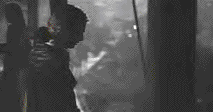
NEW ORLEANS HISTORY FACTS
New Orleans, Louisiana is located on the Mississippi River about 110 miles upstream from the Gulf of Mexico on the southern shore of Lake Pontchartrain.
The City was named Novelle Orleans (New Orleans) in honor of Philippe II, Duc d'Orleans, the regent of France under French King Louis XV.
1718 Jean Baptiste Le Moyne, Sieur de Bienville and John Law founded the City of New Orleans and named it. The French Quarter street plan was made by Adrien de Pauger.
1721 Population 470.
1722 New Orleans becomes the Capital of the Louisiana Colony.
1727 Ursuline Nuns arrive in New Orleans
1729 Indian massacre of the French at Natchez
1755 French Acadians began to arrive in New Orleans
1763 New Orleans becomes a Spanish colony by the signing of the Treaty of Paris
1767 New Orleans became Capital of Spanish Louisiana
1769 First Spanish Governor, Alexander O'Reilly takes control of Louisiana Colony, French rebellion resulted in execution of five French leaders
1788 In the French Quarter, over 850 structures are destroyed by fire including the cathedral.
1794 St. Louis Cathedral construction is completed. Another large fire destroys buildings in the French Quarter
1800 Louisiana secretly returned to France
1803 Louisiana Purchase, Napoleon I sells Louisana to the United States.
Population about 8,000
1812 Louisiana admitted to the Union as the 18th state.
First steamboat reached New Orleans
1814-1815 General Andrew Jackson defeats the British ending the War of 1812.
1827 The first Mardi Gras celebration is held in New Orleans.
1835 The United States Mint is built in New Orleans.
1837 The first documented Mardi Gras parade in New Orleans.
1840 Port of New Orleans ranked fourth in World
1850 Place d'Armes officially renamed Jackson Square.
Population 116,375
1852 New Orleans third largest city in the United States
1853 Yellow Fever Epidemic (more than 8,000 died)
1857 First modern Mardi Gras parade sponsored by a Krewe
1861 Louisiana secedes from the Union
1862 New Orleans captured by Federal Troops under General David Farragut, placed under the command of Gen. Benjamin Butler
1865 Louisiana returns to the Union.
1872 Krewe of Rex organized
1884 World Cotton Exposition
1894 Krewe of Zulu organized
1900 Population 287,104
1910 The last coins are minted in New Orleans and the Mint is closed.
1911 Loyola University is established.
1916 Xavier College established.
1921 The Vieux Carré Commission is created.
1958 City Hall, 1300 Perdido Street opened
1967 The New Orleans Saints franchise awarded
1975 The Superdome is completed
1984 Louisiana World Exposition
1988 New Orleans hosts the Republican National Congress
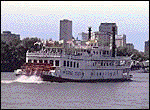
Dedicated to the memory of one of
New Orleans' most beloved poets
When I walk alone
along the streets
in unfamiliar places,
and see the doors
of houses that line my way,
I think of a house
I used to know,
and a door I lived behind.
A door that last I closed in anger,
a long, long time ago.
And now, I can't remember why.
I only know I never did go back;
though I knew someone inside was crying.
I never did go back.
And now, it's too late to try.
Jim Metcalf
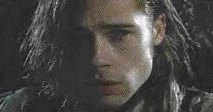
Links to New Orleans:
